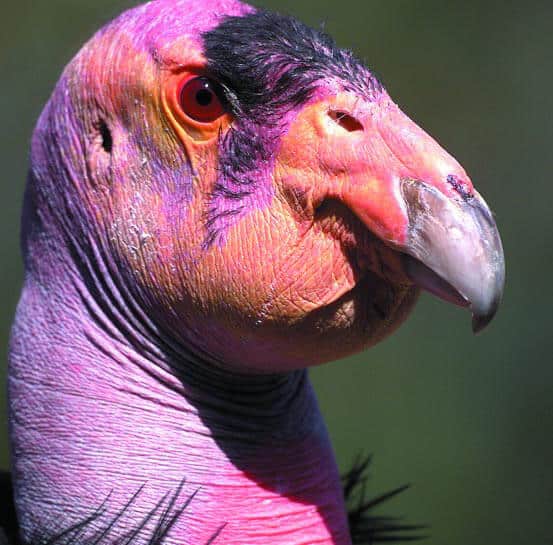North America's largest land fowl has made a remarkable recovery after being on the brink of extinction. To ensure his continued rehabilitation and survival, the biologists use advanced equipment and unconventional intervention methods

The first California condors to be returned to the wild in the past five years took a few hesitant leaps over the cliff top, craned their rosy necks above the abyss, and carefully spread their wings, which were 2.7 meters and more. Since that landmark in 1992, researchers have released nearly 200 captive-born condors into the wild. And the birds thrived. Their total number jumped from 22 individuals in 1987 to 396 birds today. The wild population is concentrated in Baja California, Arizona, southern and central California. As these giant scavengers repopulate their entire 18 million square kilometer natural habitat, scientists are deploying cutting-edge technology to guide these Pleistocene-era remnants into self-sufficient existence. The researchers are using devices and other unusual inventions, such as replacing infertile eggs with fertile ones, to ensure a complete restoration of the condor.
From his office in Ventura, California, Jesse Grantham, the coordinator of the US Fish and Wildlife Service's condor recovery program, can track every condor that goes free and locate it to within a few feet. He and his colleagues attached to each bird, which weighs about 8 kilograms, a radio transmitter and a solar GPS device, which transmits the location of each chicken more than 1,000 times a day. If the location signal is repeated many times in a row, it means the bird is in trouble. In such a case, a rescue team goes out to the condor, which could be sick or dead, and examines it and the carcass it ate. The GPS data also helps scientists locate the nesting caves. They test the viability of each egg, and even replace infertile eggs with fertile eggs laid by other captive birds.
The scientists found that the dangers lurking in the condor today are largely similar to the dangers that threatened its existence half a century ago, chief among them lead bullets hidden in the carcasses. About 90% of the condors suffer from an excess of lead in their bodies, and this despite the ban on the use of lead bullets in the condor's distribution areas in California. The other dangers include bottle caps, DDT, high voltage lines and occasionally even direct shooting at the birds. The environment still contains "all the mortality factors that nearly wiped out the condor," Grantham says.
But the scientists are trying to neutralize any possible risk with the help of the condors' telemetry recording. For example, the GPS coordinates showed the existence of a corridor where the condors fly near Big Sur in California. It turned out that in this ravine between Anderson Peak and the Pacific Ocean, a high voltage line of the electrical company "Pacific Gas and Electric" is deployed. After three condors were electrocuted in the area, the birds' flight path data helped convince the company to bury the power line in the ground, which it did in August 2011. Elsewhere, scientists are coordinating the location of solar and wind power plants with the building companies so they don't interfere with the condors' flight paths. . And also on the main issue there was progress after calls to expand the ban on lead bullets and enforce it more strictly.
And more data is expected. The scientists plan to install tiny digital devices that will record each condor's heart rate and wingbeats. Thus they knew how the wind speed and direction affect the raptor's energy consumption. By cross-referencing the aviation data with meteorological data, the scientists can learn exactly how the condors move over the various ground routes and which places are most important to protect, says Mike Wallace from the Institute for Nature Conservation Research at the San Diego Zoo.
The program for the restoration of the condor, whose annual budget is 5 million dollars, has proven that it is possible to encourage the Californian condor to breed in the wild and raise its offspring successfully. Grantham Wallace predicts that the telemeric information will help ensure the independent existence of future populations - but only if they manage to solve the lead problem.

3 תגובות
And here is another interesting stage in evolution, the stage of biological tissue + electronic feedback + and philosophical-moral futurity, perhaps after all "man's permission".
I just can't believe it's real - the picture looks like it's been photoshopped, but it's not. It's just amazing what creatures there are in the world!
The condor can only be loved by its mother,